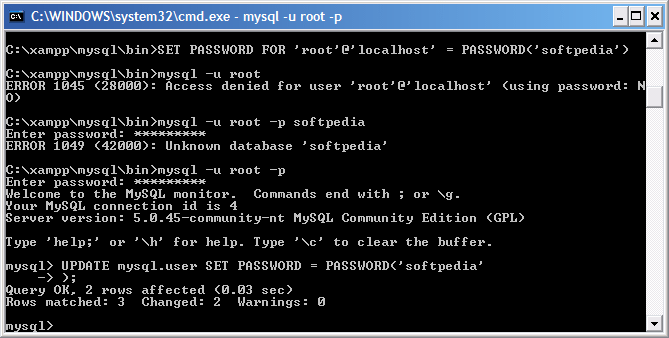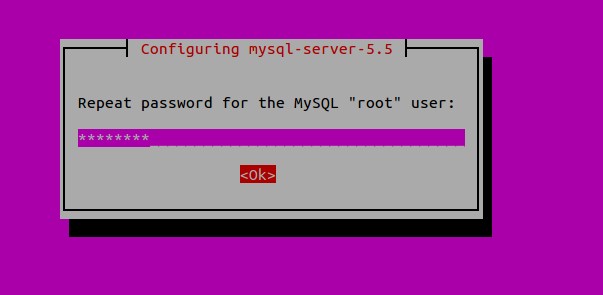


Although you can log in as root, once you start the MySQL server, make sure you start it with the -usermysql option. I also created a MySQL account with the same username as my unix account, again with no password, and using the root account I granted it access to the tables I needed, then I could also connect from apps from my user account without changing to root. Step 1: Log in as the MySQL User When you boot into your Linux installation, make sure you’re logged in as the same user that normally runs MySQL.
Mysql set root password password#
To test open a new Terminal and do sudo su then mysql and check if it connects with no password (this didn't work when a password was set). I connected as root using the password then ran: sudo systemctl restart mysqlįinally, try logging in as root and verify that your new password works.I also created a root password at installation and wanted to change back to using unix authentication once I understood that if I run commands or launch apps as root they can connect to the database without any password which is much simpler than having another password. Restart the MySQL server to apply these changes. sudo systemctl unset-environment MYSQLD_OPTS sudo systemctl revert mysql Unset the systemd environment variables set earlier and revert the MySQL configs to start MySQL normally again. ALTER USER IDENTIFIED WITH caching_sha2_password BY 'test123' Īfter setting the password, quit MySQL by entering exit Revert Configs and Test New Password Remember to replace test123 with your own password. So, reload the grant tables to make such statements work first. But such account management statements are currently disabled as we launched MySQL by skipping the grant tables. I have run mysqldsafe -skip-grant-tables, updated the root password, and checked the user table to make sure it is there.

We’ll use the ALTER USER statement to set a new root password. MySQL root password change Ask Question Asked 11 years, 9 months ago Modified 1 month ago Viewed 509k times 183 I have been trying to reset my MySQL root password.

You won’t need to enter the password even if you log in as root. sudo systemctl start mysql Login as Root and Set Password sudo systemctl set-environment MYSQLD_OPTS="-skip-networking -skip-grant-tables" Set the MYSQLD_OPTS systemd variable as shown below. Syntax: mysqladmin -u root password newpassword mysqladmin -u root -h hostname password newpassword Example: mysqladmin -u root password ws8dr8as3 mysqladmin -u root -h localhost password ws8dr8as3 You will also want to restart the database server after running this command sudo /etc/init. It does make your server insecure though, so we’ll also temporarily disable remote connections. If you just run mysql command under root user you will be granted access without asked for password, because socket authentication enabled for rootlocalhost. This’ll let us log in and set a new password for the root account.
Mysql set root password full#
Starting the MySQL server by skipping the grant tables lets anyone connect with full privileges and without a password. We’ll cover the exact steps required to do this on Ubuntu in this article. As part of the installation of the MySQL Cluster, dbinstall container generates the random password and marked as expired in the MySQL SQL nodes. While this is good practice, a minor drawback is that people often forget the root password after not using it for a while.įortunately, resetting the root password is a simple task. Following is the procedure to change MySQL root user password. As the root account has full privileges in MySQL, it’s recommended to create other accounts for specific use cases.


 0 kommentar(er)
0 kommentar(er)
